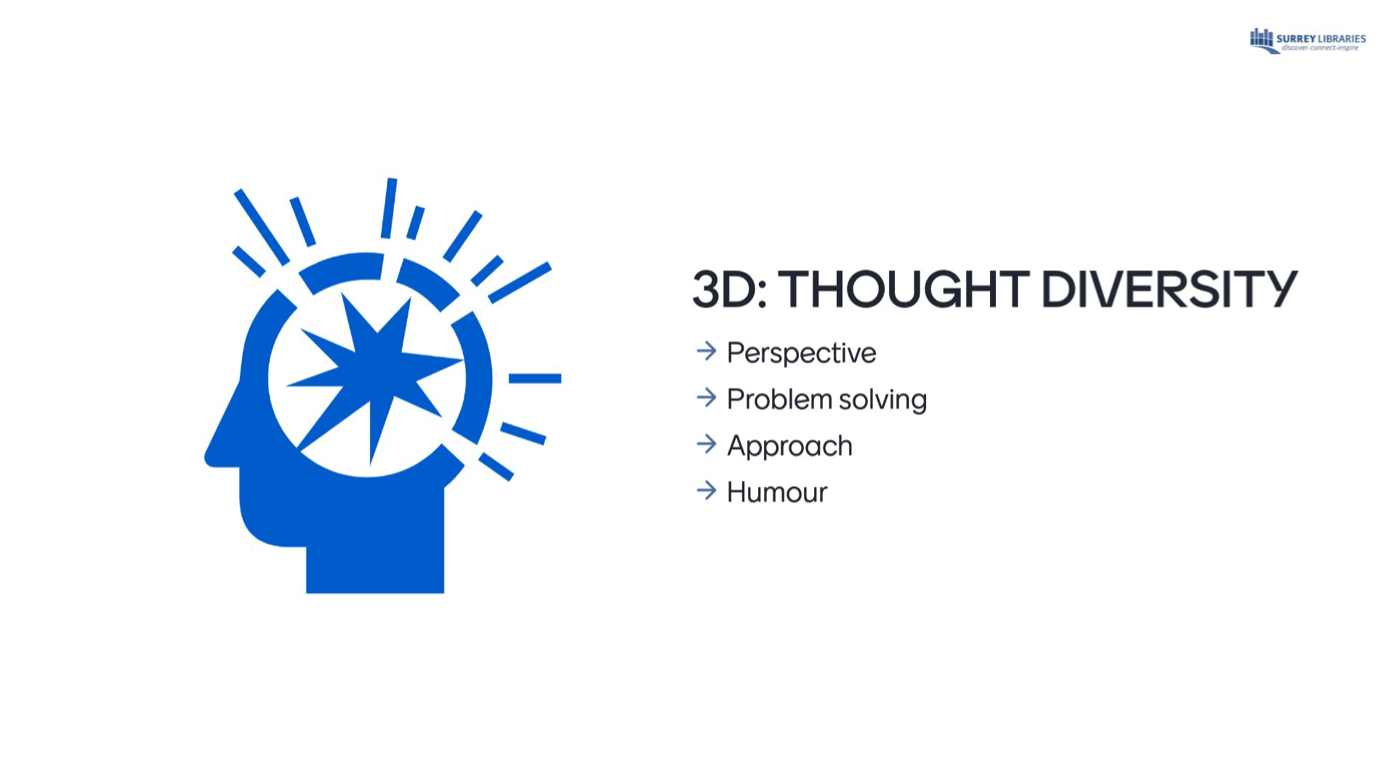
THANK YOU for making the time to participate and contribute to the EDI Training, as coordinated by Surrey Libraries. Please find below the descriptions and the most currently-used visuals for the following module:
Inclusion Literacy
Unconscious Bias
Intercultural Fluency
How to be an Ally
Active Bystander Training
Also below are the results of the polls from each of the sessions. If you would like one of the slides as a PDF, or have a question or some feedback, please feel free to send us an email directly at info@iexcellencestrategy.com.
Module 1.
Inclusion Literacy














































































Outcomes-driven organizations lead with intention, clarity and a strong sense of excellence. This module was focused on:
Establishing a basic literacy around diversity and inclusion;
Providing a common understanding of the journey towards inclusive excellence;
Acknowledging real-life challenges of fostering a more diverse or inclusive campus or workplace; and
Affirming the contribution of inclusion towards psychologically healthy and safe campus or workplaces.
This module introduced:
A 3-dimensional framework of diversity (Inherent, Experiential and Thought diversity);
A model for the stage-by-stage process towards institutionalizing inclusivity in a workplace culture (below).
Deloitte’s research on the three factors employees need to feel included (below).
Source: Deloitte and Victorian Equal Opportunity and Human Rights Commission (2013).
Module 2.
Unconscious Bias





















































































At the core of inclusive leadership and intercultural capacity is self-awareness: a deep understanding of one’s implicit (or personal) bias and the systemic biases that affect all kinds of decision-making. As an extension of the emphasis on self-awareness in the MBTI training, this module was devoted to understanding key forms of implicit bias that commonly affect workplaces (affinity bias; confirmation bias; and social comparison bias) in general, and three behavioural biases that specifically disadvantage women in the workplace. This module led participants in identifying and sharing examples of unconscious bias in the workplace and other work-related environments.
With a specific focus on bringing awareness to and disrupting unconscious and cultural bias in the selection process of new hires, this session provided an understanding of how biases are formed in our unconscious, and specifically addressed the following:
Gender Biases:
Maternal bias;
Competency/Likeability trade-off bias;
Performance attribution bias.
Affinity bias;
Confirmation bias
Social comparison bias;
Attribution error;
Distance bias.
Unconscious Bias Handout Package (Download PDF)
“How To Fight Racial Bias When It's Silent And Subtle.” (NPR)
Resources
Books:
The Person You Mean to Be by Dolly Chugh
ReInventing Diversity: Transforming Organization Community to Strengthen People, Purpose, and Performance by Howard J. Ross
Blind Spot: Hidden Biases of Good People by Mahzarin R. Banaji and Anthony G. Greenwald
Hope in the Dark: Untold Histories, Wild Possibilities by Rebecca Solnit
Interviews:
Are you a 'Good-ish' Person? How to Push Past your Biases (Interview with Dolly Chugh on her book The Person you Mean to Be)
Caroline Criado-Perez on Data Bias and 'Invisible Women' (Interview with author of Invisible Women: Data Bias in a World Designed for Men)
Videos:
Module 3.
Intercultural Fluency





































































Module 4.
How to be an Ally




























































5 Traits of Being an Ally (Anne Bishop)
Allies LISTEN.
Allies crave the CREDIBILITY not the credit.
ACTIONS, not words.
They’re AWAKE
They’re self-aware to their own experience of oppression or disadvantage.
Module 5/6:
Active Bystander Training

















